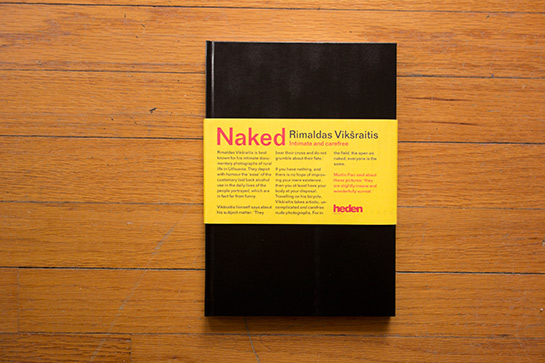A few years ago, Rimaldas Viksraitis won the Discovery Award at the Arles photography festival for his work in the Lithuanian countryside, depictions of scenes that for many critics and viewers brought to mind photographers like Boris Mikhailov or Richard Billingham. With work like Viksraitis’ the topic of photography and exploitation is never that far. It’s not clear to me how useful such discussions really are, especially since they usually omit the topic whether the photographer himself is not being exploited by the larger photography art world that discovered him and then parades him and his images around. I should also add that the photo art world might want to re-visit the topic of exploitation in light of the kinds of images people – willingly – put up online. (more)
Thus I don’t necessarily want to go there. That said, Viksraitis’ photographs have left me slightly concerned, in much the same way as I have been concerned about, for example, the art world’s celebration of Miroslav Tichy. Anyway, here’s Naked (scroll down), a book that contains photographs of, well, naked people. Some of them might already be known, others might be previously unpublished. I’d like to throw another name into the reference mix here, to somewhat broaden the discussion about Viksraitis’ work: Sergey Chilikov. Given so many of the photographs in Naked are obviously staged or constructed (at least they look that way), Chilikov’s work might just add a different way to think about these photographs.
Much like Chilikov, Viksraitis often delights in what one could call a staged absurdity. I suppose one read that into more or less all of his photographs, and a critical reading is always just that, a critical reading. But the photographs in Naked appear to be somewhat more focused, with the element of documentary (in the loosest sense) mostly absent, so that the reading might come with less cross-cultural baggage. When I wrote “staged absurdity” I’m mostly thinking of a vodka-fueled, Eastern European magical realism, where the magical isn’t quite so magical (it’s more than just a tad mundane actually), and let’s not even talk about realism.
But still… the whimsy might be very hung over, and the proto-/pre-Christian imagery might be rooted in a way less magical – and thus much scarier – paganism (at least from the point of view of someone with a US/European background), but approaching both Chilikov and Viksraitis from that angle appears to offer an opening for, well, a different approach, one that somehow circumvents all the markers that make the reading of the work so conveniently simple.
There then would be my reading of this work, which, I reckon, might get rejected by both those who went gaga over Viksraitis before, and by those who would want to keep the term for where it’s usually used: This is magical realism. The magic might not look so magical, and the realism might only be all too real, but then you can’t always get what you want.
Naked; photographs by Rimaldas Viksraitis; 96 pages; Heden; 2012



